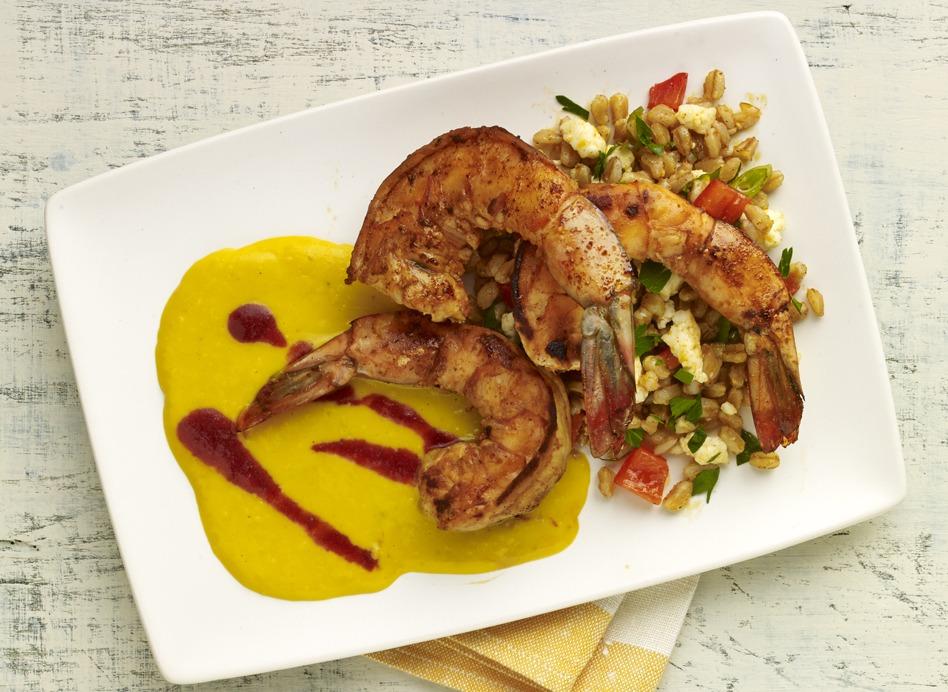The acceptance of new flavour trends has accelerated as consumers are exposed to new flavours and trends virtually everywhere they turn.
By Hailey Settineri.
McCormick & Company has released the ‘McCormick Flavour Forecast 2015’, highlighting eight trends that will shape the future of flavour. Created by a global team of experts – including chefs, culinary professionals, trend trackers and food technologists, the ‘Flavour Forecast’ inspires culinary exploration and innovation around the world.
In the 15 years since McCormick started the ‘Flavour Forecast’, people have been craving lots of flavour, looking for more intense versions of flavours and a wider variety of taste experiences. Also, the acceptance of new flavour trends has accelerated alongside social media, food trucks, TV shows, blogs, websites and specialty retail options.
According to McCormick, the flavour trends from past reports continue to evolve, providing new tastes to explore. For example, in 2014, McCormick identified ‘chilli obsession’ as a key trend. In 2015, the report identifies Japanese seven-spice (shichimi togarashi) as the next spicy flavour to explore – it takes chillies to a new level with the addition of nori, sesame and orange zest.
Past research has found emerging flavour trends begin in retail categories that create casual, easy ways to try them, such as snacks, nuts and crackers, beverages, frozen meals, and sauces/condiments.
The following eight flavours are forecast to drive flavour innovations in the coming years.
Smoked spices
Building on the popularity of ingredients such as smoked paprika and chipotle (smoked jalapeno), smoked herbs and spices are a natural progression. It’s not about smoking the whole dish, but elements of it such as herbs, spices and seeds and adding them to dishes to create smoky notes.
Liquid revolution
Chefs are using juicing and pureeing techniques to create nutrient- and texture-rich sauces ideal for cooking. Fresh purees and juices blend with bold spices and herbs to intensify sauces, pasta, dressings and more, providing a fun, delicious way to enjoy an extra serving of fruit and veggies. Spices and herbs are key to making these dishes taste great.
Global blends on the move
Japanese and Middle Eastern cuisine continue to fuel the quest for modern, inventive dishes influenced by ethnic flavours. Spice blends are on the rise as an easy way to incorporate more global flavours into everyday cooking.
Japanese seven-spice (shichimi togarashi) offers a new kind of spicy heat, while shawarma spice blend lends warm, spiced flavour to grilled meats and more.
Umami veggies
For a fresh way to savour the tempting ‘fifth taste’, look no further than naturally umami-rich nori and veggies such as mushrooms, tomatoes and sweet potatoes.
Umami literally translates from Japanese as ’a pleasant, savoury taste‘. The flavour comes naturally from glutamate (or glutamic acid), an amino acid present in many vegetables that lends a distinctive savoury taste to foods. Umami flavour occurs naturally in meats, cheeses and fermented foods.
Cookies reimagined
One classic dessert receiving innovative makeovers is the humble cookie. Classic spiced biscuit flavours take new form in decadent, imaginative desserts that redefine ‘milk and bikkies’.
The trend towards smaller dishes continues to expand into the dessert category, driving the creation of bite-sized desserts packed with indulgent flavour. This trend also amplifies our thirst for new milks that are emerging, including dairy alternatives and coconut milk.
Sour and salt
Combining coarse salt with sours such as pickled ginger, sour cherry, dried mango and lemon zest results in lively flavours that lends brightness and texture to dishes. This combination adds both taste and texture and can personalise flavour at the end of preparation.
Sour and salt can be as simple as course salt paired with citrus to sour flavours such as green apple, yuzu and rhubarb teamed with herbs and salt, all the way to a dehydrated kimchi and sea salt combo.
Middle Eastern mezze
The concept of mezze, or shared plates that make up an appetiser course, is infiltrating restaurant menus and homes alike. These casual dips and spreads are a delicious introduction to the tastes and textures of Middle Eastern cuisine. This is the evolution of hummus (fresh, colourful, textures) and tapas. As tapas created the evolution of Spanish cuisine, mezze will introduce consumers to Middle Eastern cuisine.
Flavour worth the wait
Slow-cooked dishes from around the world offer the comfort of time-honoured traditions while inviting you to explore new flavours. Every culture has those key dishes that are enjoyed together. ‘Comfort food’ has different meanings across different cultures, but the soulful appeal of rich, aromatic slow-cooked dishes is universal. Today, chefs, home cooks and food lovers everywhere continue to rediscover these time-tested recipes.


